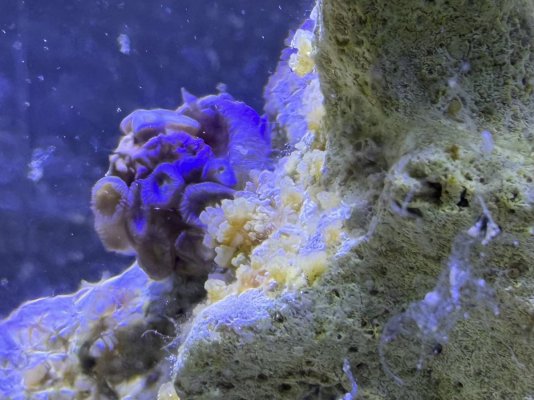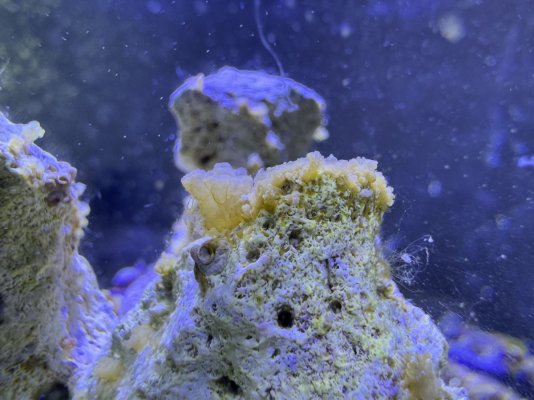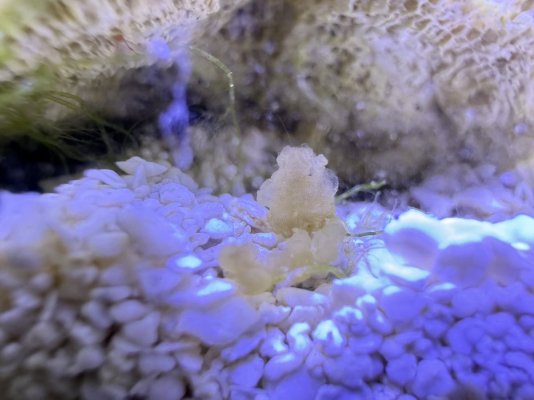Whatever it is, it loves blue light. Didn't see these at all for the first few months until I switched to more blue-intense LEDs, then a week later they showed up. Does not form mats. Sort of bunches together in small green lumpy masses. Apparently hates shade, does not touch any shaded hardscape whatsoever.
It's starting to creep onto the zoa plugs. I'm guessing that's a bad thing.



It's starting to creep onto the zoa plugs. I'm guessing that's a bad thing.



















